Taking Forward Building Rehabilitation with Technology & Enhanced Frontline Services
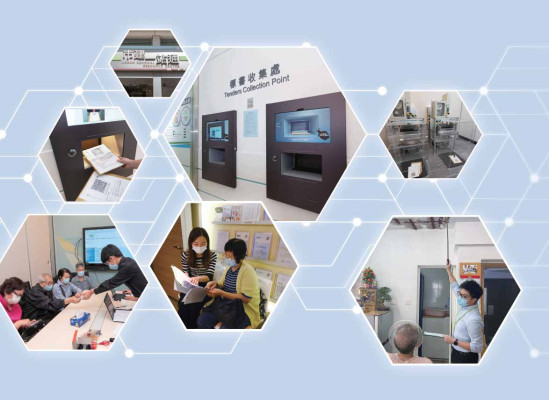
The demand for building rehabilitation continues to increase with the rising awareness of owners on building maintenance over time. Serving as an impetus for building rehabilitation, the Urban Renewal Authority (URA) has been proactively adding resources to both hardware and software development in recent years in order to expedite the process of building rehabilitation and alleviate the pressure on urban redevelopment.
Recently the URA has applied new technology in setting up a brand new Centralised Tender Collection System, which speeds up the tender collection and handling process, and hence significantly reduces the time for organising building maintenance works. Meanwhile, as the enhanced “Building Maintenance Grant Scheme for Needy Owners” has drawn a large number of new applications, URA has established a dedicated team to strengthen its frontline services. To process a large number of subsidy applications from elderly owners, the team patiently and attentively explains and provides support to the applicants, so that elderly owners are guided through their application process and able to start the maintenance work for their flats as soon as possible.
New Centralised Tender Collection System Accelerates Building Rehabilitation Process for Owners
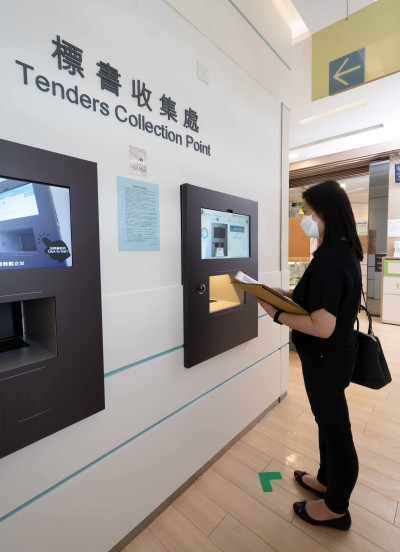 At the Tenders Collection Point located on the first floor of Urban Renewal Resource Centre at Tai Kok Tsui, users are guided through the tender submission process with instructions available in traditional and simplified Chinese as well as English. Immediate access to enquiry service is also available through the system.
At the Tenders Collection Point located on the first floor of Urban Renewal Resource Centre at Tai Kok Tsui, users are guided through the tender submission process with instructions available in traditional and simplified Chinese as well as English. Immediate access to enquiry service is also available through the system.
Since additional subsidy schemes for building rehabilitation were launched, in particular the “Operation Building Bright 2.0” and “Fire Safety Improvement Works Subsidy Scheme”, more and more owners have recruited their work contractors or consultants through the URA’s “Smart Tender” electronic tender platform. It resulted in a shortage of tender boxes, causing delay in the tendering of building renovation work. To deal with the exponential growth of the demand for building rehabilitation services in recent years, in which existing facilities fell short to meet the needs, URA’s Building Rehabilitation Manager Vincent Lam and his team decided to develop a brand new Centralised Tender Collection System, taking reference from the practice of using barcodes in logistics services and the book return system in public libraries.
The new system is set on the first floor of Urban Renewal Resource Centre in Tai Kok Tsui. Work contractors or consultants can now submit their tenders by simply following the instructions on the computer screen, pressing a few keys and then placing their tenders on the conveyor belt one by one. In the backend, the computer will record the submission time and the details of the respective building for each tender. The tenderer will get a printout receipt and a confirmation e-mail sent by the system simultaneously. URA staff will scan the tendering details and label the tenders received during office hours each day and sort them to the designated shelves. This system can handle 3,000 procurement cases at maximum each year, significantly exceeding the capacity of the conventional tender boxes.
On the closing date for tenders, the system will automatically generate the total number of tenders received and notify the Certified Public Accountant in charge of opening the tenders, so that owners and accountants can reserve sufficient time to complete the tender opening process. To ensure fairness and reliability, the team has also sought advice from the Independent Commission Against Corruption and internal auditors during the design stage, and installed surveillance cameras to make sure the system would operate with transparency.
Vincent said the Building Rehabilitation team has experienced the advantages of the new system since launch and users' feedback is also positive. “We hope to further accelerate the process of building rehabilitation by applying the new system so that everybody can maintain and enjoy their comfortable home,” said Vincent.
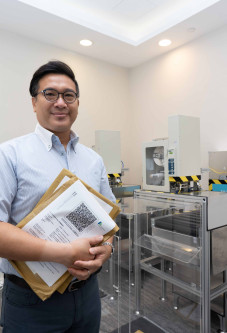 Taking reference from the practice of using barcodes in logistics services and the book return system in public libraries, Vincent and his colleagues have developed a new Centralised Tender Collection System to tackle the problem of tender boxes shortage.
Taking reference from the practice of using barcodes in logistics services and the book return system in public libraries, Vincent and his colleagues have developed a new Centralised Tender Collection System to tackle the problem of tender boxes shortage.
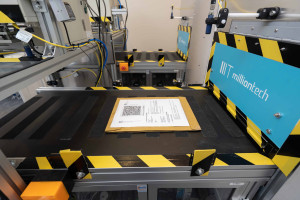 Tender documents are carried by the conveyor belt to the system's backend, where details of the building for tender are read by the scanner.
Tender documents are carried by the conveyor belt to the system's backend, where details of the building for tender are read by the scanner.
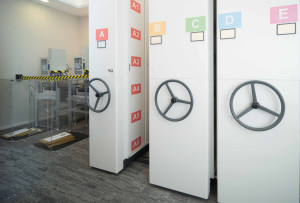 Tenders received are stored in shelves with greater capacity than traditional tender boxes.
Tenders received are stored in shelves with greater capacity than traditional tender boxes.
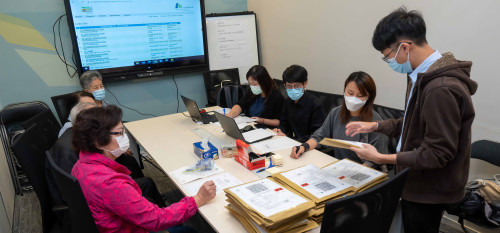 Building owners, Certified Public Accountant and URA staff witness the opening of tenders upon the closing date.
Building owners, Certified Public Accountant and URA staff witness the opening of tenders upon the closing date.
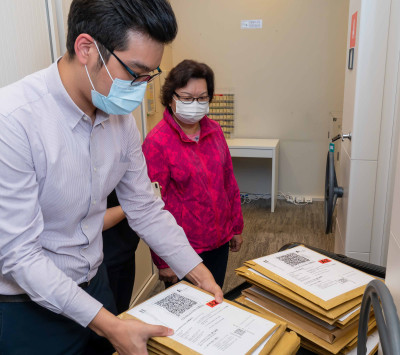 Accompanied by URA staff, owners take stock of the tenders received at the backend of the system.
Accompanied by URA staff, owners take stock of the tenders received at the backend of the system.
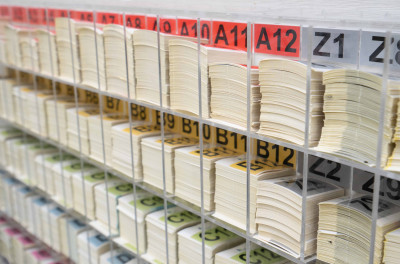 Tender documents are labelled clearly to indicate their respective shelves to be stored in.
Tender documents are labelled clearly to indicate their respective shelves to be stored in.
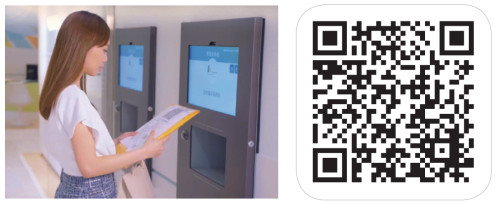 Watch the Centralised Tender Collection System video for more details.
Watch the Centralised Tender Collection System video for more details.
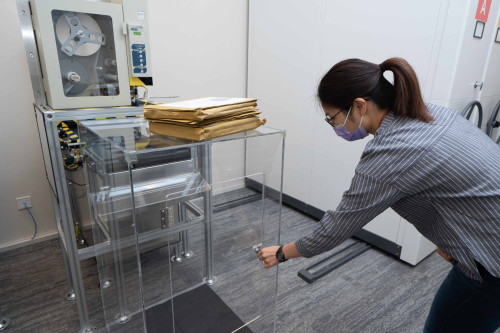 The tenders received each day are collected and processed carefully by designated URA staff, according to the established procedures.
The tenders received each day are collected and processed carefully by designated URA staff, according to the established procedures.
